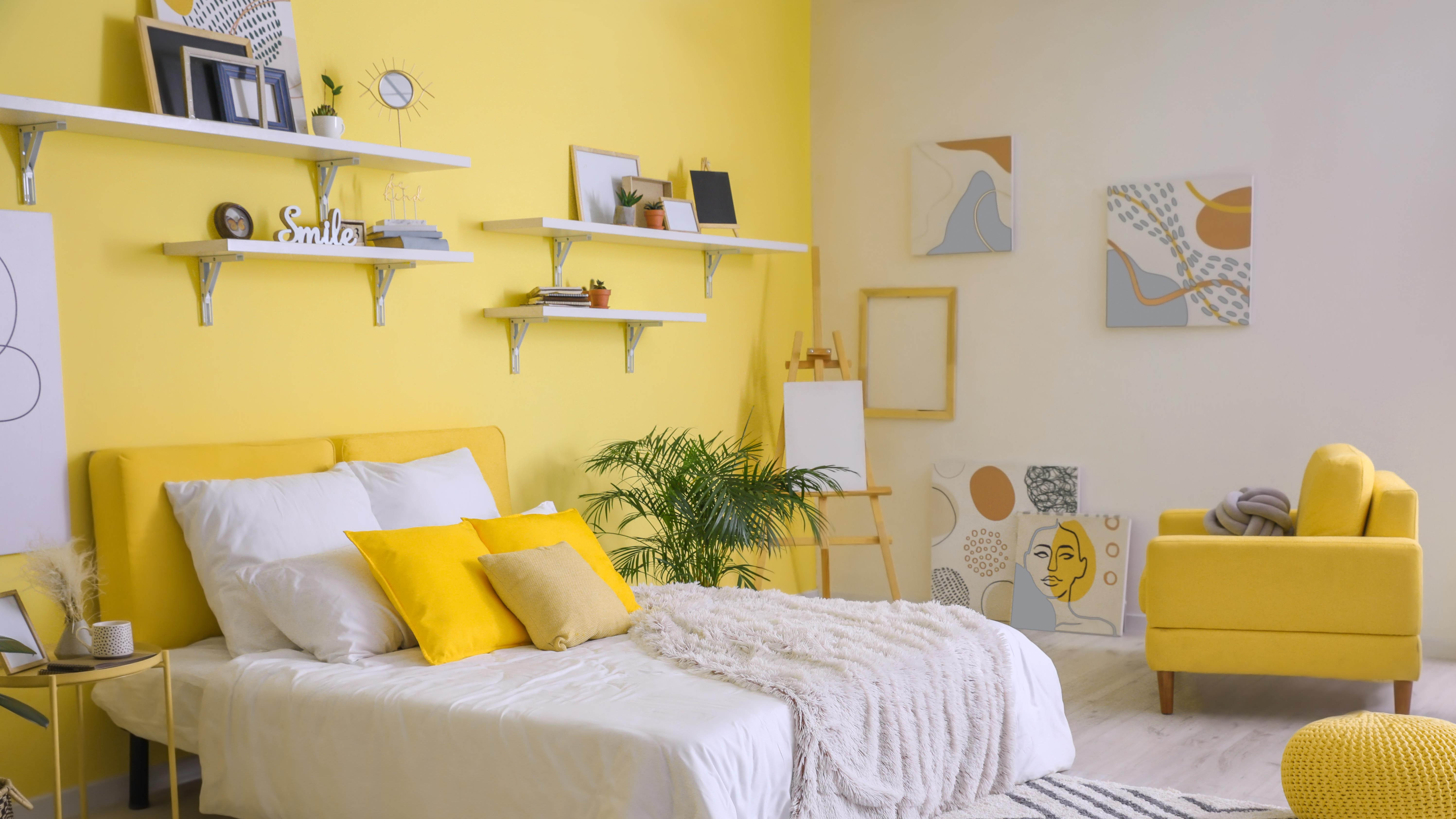5 paint colors you should never use in a bedroom
Avoid these paint colors in the bedroom

The bedroom is our cozy sanctuary where we sleep and relax, but if you have trouble sleeping or wake up feeling grumpy, maybe it’s your color scheme?
According to the theory of color psychology, the role of colors can affect our emotions, moods and even behaviour. And since color can also have an impact on sleep quality, it’s important to know what paint colors you should never use in the bedroom.
Such shades are known to disrupt sleep, be overstimulating, or make a space feel cramped and uninviting. And while these colors might be your favorite choices, you want to create a soothing and calming environment. Alternatively, you can still include bold and ‘energetic’ colors in your soft furnishings, accents or accessories — to add a vibrant feature to the room.
But before you get out the paintbrush to give your room a personal touch, avoid these 5 paint colors you should never use in a bedroom.
Be sure not to use any of these colors that will make your home look cheap, and avoid these 7 painting mistakes. Also, should your bed face the door? Here's what the experts think. Plus, if you're having trouble finding a color palette, a color wheel might help — interior designers swear by this hack when designing a room.
1. Red

Unless you want a ‘Moulin Rouge’ themed boudoir, red is to be avoided in the bedroom at all costs. This bold color is one of the most energetic on the spectrum, also representing power, war and danger. As a result, red can often provoke anger or aggression — which won’t bode well for a calming, peaceful retreat!
If you do want to include shades of red in your bedroom, experts recommend to opt for a terracotta tone, and break it up with calming, neutral whites or other tones. What’s more, you can use tones of red for a striking feature wall, which will make the space feel less intense and overwhelming.
Sign up to get the BEST of Tom's Guide direct to your inbox.
Get instant access to breaking news, the hottest reviews, great deals and helpful tips.
2. Yellow

This warm color may have a cheery, feel-good factor, but this is best avoided in your bedroom. According to designers, a saturated, bright yellow on every wall is overstimulating, and can leave you feeling overly excited, nervous or anxious. As a result, this certainly won't help to encourage a calming environment for sleep. In addition, bright yellow is generally distracting, taking the gaze away from the rest of the room.
Generally, yellow works better in lively kitchens, dining areas, and children's rooms. But if you still want to inject a splash of bold yellow in the bedroom, stick to a focal point, accent wall or soft furnishings such as rugs or cushion covers instead. Another alternative is to opt for deep ochres shades or even caramel tones which would be more calming and less harsh.
3. Dark brown

Although there are certain shades of beige that work well in bedrooms, experts advise against using dark brown. This particular shade can make a space feel dreary, dark and depressing — bringing on feelings of anxiety and isolation. Which is not ideal for a relaxing, sleep-encouraging space. In addition, this can make a room feel smaller, in which case, you’ll need to know how to brighten a dark room to make it look bigger.
Interestingly, having brown walls around the home is known to lower the value of a property — which isn’t ideal if you’re trying to sell for top dollar. Instead, opt for muted tones such as beige or cream; these work well for bedrooms. If you do prefer bold colors however, experts advise sticking to teal or dark blue tones to add deep color.
4. Dark gray

Charcoal gray may be on-trend in many homes right now, but experts advise against using these tones when painting a bedroom. According to a study by the North American Mental Health Professional Advice Council, dark gray tones can contribute to depression, evoking feelings of loneliness, and isolation. What’s more, gloomy grays can sap the energy out of the room, preventing you from waking up feeling energized and happy!
If you do want to include dark grays in your home, it’s recommended to choose softer/soothing shades, and go for a matte finish. Depending on which way your master bedroom is facing, a glossy paint will reflect any bright light that might disrupt your sleep at night.
5. Purple

While soft, pastel tones can be soothing, bold purples and magenta pinks on the other hand, will stimulate energy and creativity. In fact, some experts suggest that purple can bring about vivid dreams or worse still, nightmares — which will inevitably affect the quality of sleep and overall well-being.
Instead, these vibrant tones work better as a feature wall or in décor accents around the bedroom. And if you do have a love for the color purple in the home, this invigorating color is best suited to a home office setting, busy playrooms or hobby rooms.
More from Tom's Guide

As the Homes Content Editor, Cynthia Lawrence covers all things homes, interior decorating, and garden-related. She has a wealth of editorial experience testing the latest, ‘must-have’ home appliances, writing buying guides and the handy ‘how to’ features.
Her work has been published in various titles including, T3, Top Ten Reviews, Ideal Home, Real Homes, Livingetc. and House Beautiful, amongst many.
With a rather unhealthy obsession for all things homes and interiors, she also has an interior design blog for style inspiration and savvy storage solutions (get rid of that clutter!). When she’s not testing cool products, she’ll be searching online for more decor ideas to spruce up her family home or looking for a great bargain!
